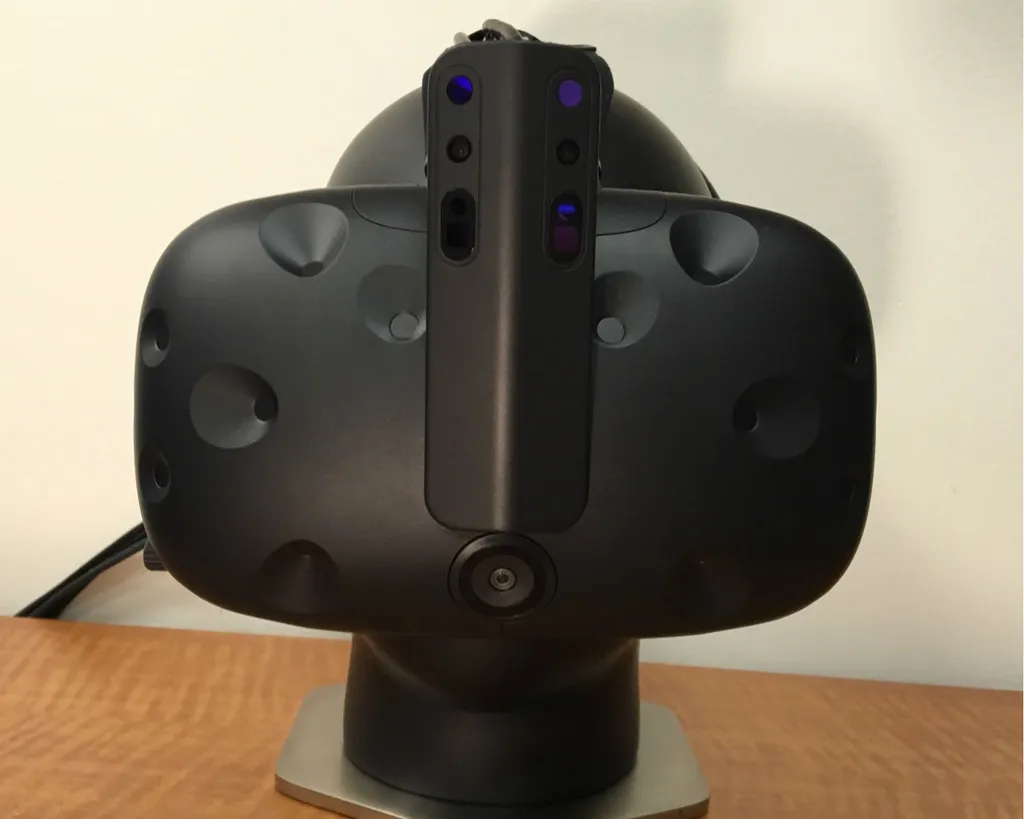An Intel engineer tweeted a tease suggesting VR is going to be a major theme at the company’s developer conference in a couple weeks.
The tease is a photo of a unicorn-shaped modification to the HTC Vive that uses a series of cameras to sense the depth of surrounding objects. Leap Motion already offers a mount for its outward-facing hand tracking sensor that hooks up to the headset over USB. While being useful for hand tracking too, the sensor teased by Intel looks both robust and different from anything we’ve seen previously from Intel’s RealSense depth-sensing technology. This new sensor features three holes facing in each direction that could house different types of cameras.
Industrial design team nailed it. pic.twitter.com/V3cMY0GBFu
— Dimitri Diakopoulos (@ddiakopoulos) August 3, 2016
We reached out to Intel Prototyping Engineer Dimitri Diakopoulos on Twitter to find out as much as we could. He told us an accessory like this could track hand movement as well as IR-tracked controllers. The system could also scan the environment in real-time. This opens up the potential to detect obstacles automatically. You don’t want to step on your cat while immersed in VR and a sensor like this could help make sure that doesn’t happen.
The sensor might also let you switch to a view of the real world if you want to, for example, sit in a chair or pick up a glass of water without taking off the headset. The play area for a headset like the HTC Vive could be automatically configured with such a feature too, eliminating a relatively involved setup process. The HTC Vive includes an outward-facing camera, but it can’t yet warn you of potential collisions outside of the Holodeck-like bounds of the room that are shown if you get too close. With this depth sensor, if you got too close to your couch you would actually see it in front of you.
Look for more information at the Intel Developer Forum in San Francisco from Aug. 16-18.


























